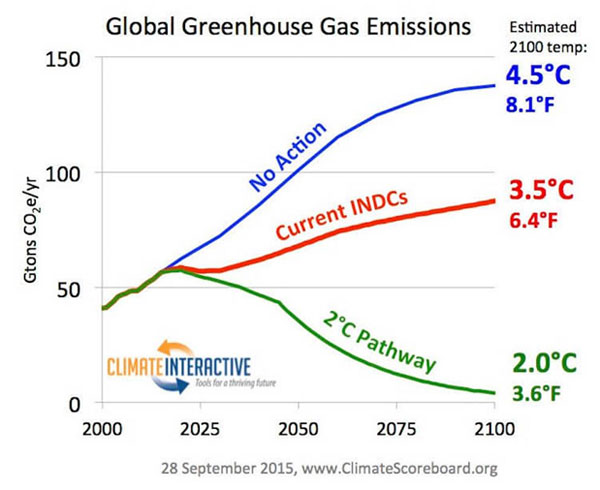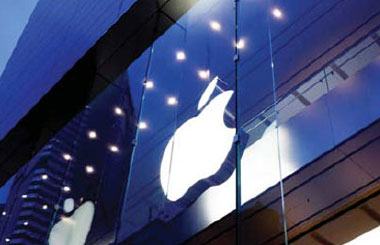The surprisingly simple solution to climate change
Updated: 2016-01-12 21:10
By Eric Rondolat(chinadaily.com.cn)
|
|||||||||||
We are at a crucial juncture in the history of our planet. The global agreement at COP21 is an unprecedented commitment to pre-empt a catastrophic rise in global temperatures. Now is the time to change fundamentally the way we use the world's resources – or face the consequences. The opportunities, and benefits, of acting now are immense. Governments have taken a significant step in the right direction by submitting national pledges to reduce emissions. The collective pledges by 185 nations to cut greenhouse gas emissions mark a historic breakthrough. For the first time, there is a shared commitment to limit global warming to less than 2°C.
Improving energy efficiency
A bottom-up approach to setting national targets, country by country, has achieved more at this stage than attempting to impose a framework for cooperation from the top down. However, the sum of these individual pledges is not yet sufficient to achieve our shared goal, as this chart shows.
 |
The crucial next step is a review mechanism, agreed at COP21, to revise national targets over time.
Energy efficiency gives us the power to make up the deficit. The stated goal in this process is a rise of 1.5°C in global temperatures. If we can double the annual rate of improvement in energy efficiency, the ambitions set out at COP21 will become reality. This is a pivotal moment, an opportunity to do business differently.
Clever use of energy will unlock a host of economic and social – not to mention environmental – benefits. Best of all, solutions to this great energy challenge already exist. We know that we have to do more to reduce carbon emissions. We don't have to wait for answers or new inventions. The digital, energy-efficient technologies that we need are already available.
Lighting is one of the easiest places to start. At Philips, we believe there are two key strategies for energy efficiency: first, in developed countries, we should speed up the pace of renovation of existing infrastructure; second, we can help developing countries to leapfrog to solar-LED lighting, effectively a zero-energy solution.
Climate change: a light-bulb moment
Lighting accounts for a staggering 19% of global electricity consumption, yet we still cling to outdated and inefficient alternatives. LED lighting consumes at least 40% less energy than conventional lighting – and that's just the beginning.
Intelligent LEDs, embedded with sensors and connected wirelessly, can be managed remotely via the internet. Their potential in tackling climate change is immense: connected lighting can deliver savings of up to 80% as households, businesses and entire cities reduce their environmental impact.
Our most recent estimate is that a universal switch to LED could slash lighting's share of electricity consumption to just 7%, a saving of €272 billion and a reduction in global carbon dioxide emissions of about 1,400 megatons by 2030.
Two years ago, Los Angeles began installing 140,000 LED street lights. Last year, the city reported energy savings of 63% and cost savings of nearly $9 million. Now consider this: of approximately 300 million streetlights across the world, only about 10% are LEDs. And just 1% are connected. Failure to bring this technology to scale would be a missed opportunity.
Social and economic benefits
Energy efficiency does not entail sacrifice – quite the opposite. It can help reduce climate change, while bringing huge economic and social benefits. Simply doubling our progress in energy efficiency – from the current rate of 1.3% to, say, 3% per year – would create 6 million new jobs within five years. At the same time, by 2030, that would cut the world's energy bill by more than $2 trillion.
Cleaner, energy-efficient light is also an urgent humanitarian need. Around one in seven people are trapped in light poverty. That's 1.1 billion people, cut off from the grid with no access to electric light in their homes. Many resort to kerosene lamps and candles, pollutants which claim 1.5 million lives every year through respiratory illnesses and fires.
Off-grid solar LED can end this injustice, at a fraction of the cost of kerosene or grid lighting. Bringing these communities out of darkness would trigger a huge stimulus for development, with positive effects for global growth. These countries have an opportunity to start from scratch with greener, money-saving lighting while the rest of the world still has to play catch-up.
Teaming up to safeguard the future of our planet In pleading for a global wake-up call to prioritize energy efficiency and reduce carbon emissions, we at Philips are playing our part. In two decades, we've cut our usage of non-renewable sources from 92% to 45%. We are walking the talk, adopting energy-efficiency measures to reduce greenhouse gas emissions across our business. At COP21 we pledged to shrink our carbon footprint to zero by 2020.
Making a real difference requires a potent combination of political will, entrepreneurial drive and new financial models. To limit global warming will take a revolution, one that will safeguard the future of our planet by unlocking massive benefits for the economy, for business, and for society. Acting together, we can achieve both the detailed targets and the greater vision agreed at COP21.
The author is CEO of Philips Lighting. The views do not necessarily reflect those of China Daily.
Today's Top News
Several dead, wounded after blast in central Istanbul - Turkish TVs
Chinese visitors to Britain soars by 28% in
first half of 2015
German citizens rally against anti-Islam movement
Spain's Princess stands trial on tax fraud charges
Protest goes violent as rift on refugees escalates
Investors to diversify assets globally to lower risks
Going mobile
Wealth of options for China's super-rich
Hot Topics
Lunar probe , China growth forecasts, Emission rules get tougher, China seen through 'colored lens', International board,
Editor's Picks

|

|

|

|

|

|






